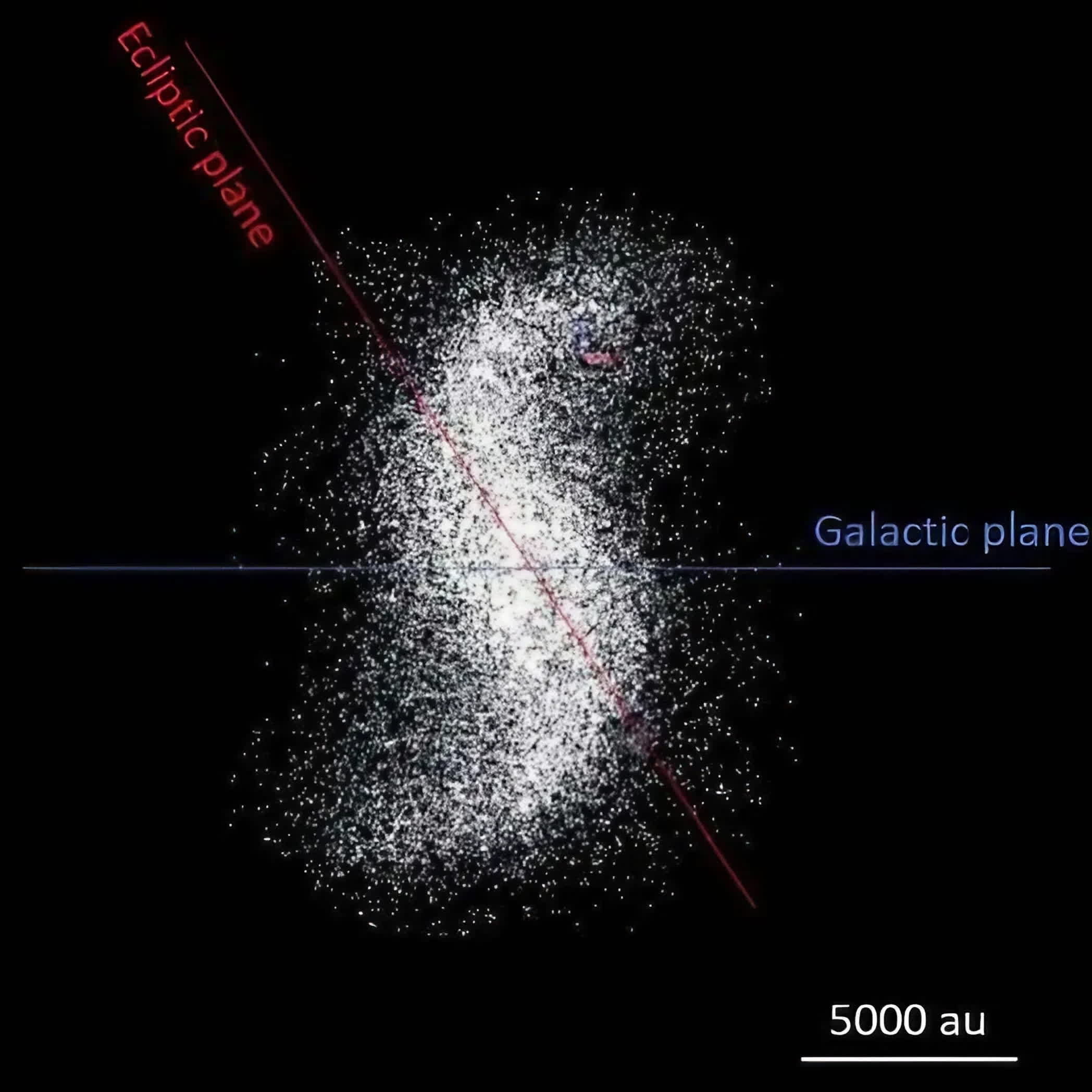In a nutshell: Far beyond the orbit of Pluto lies a mysterious region filled with icy objects circling the Sun. This distant zone, known as the Oort Cloud, remains unseen, but its existence is inferred from the long-period comets that occasionally journey inward. Now, a new model suggests that the inner part of the Oort Cloud may have an unexpected structure resembling a spiral, much like a miniature galaxy.
The Oort Cloud begins roughly 2,000 – 5,000 astronomical units (AU) from the Sun, with 1 AU being the average distance between Earth and the Sun. Its outer edge extends from 10,000 to an astonishing 100,000 AU away. This distant region consists of leftover planetesimals from the early Solar System. As the planets formed, their gravity scattered countless icy bodies to the outermost reaches, where they continue to orbit the Sun to this day.
Until now, scientists knew the Oort Cloud existed but had little understanding of its shape. However, researchers from the Southwest Research Institute and the American Museum of Natural History have proposed in a yet-to-be-peer-reviewed paper that its inner structure could resemble a spiral.

The researchers explored a phenomenon known as the “galactic tide” to arrive at this possibility. This tide is the cumulative gravitational influence of all the stars, black holes, and concentrated mass within the Milky Way. For objects close to the Sun, like planets, these external forces are negligible compared to the Sun’s gravity. But in the Oort Cloud, the galactic tide becomes a dominant factor.
Using NASA’s Pleiades supercomputer, the team ran simulations incorporating the galactic tide and other effects over billions of years. The results depicted the inner Oort Cloud (1,000 – 10,000 AU) as a spiral disk spanning roughly 15,000 AU – featuring not one but two spiral arms. This structure makes the Oort Cloud resemble a miniature, oddly shaped galaxy, in contrast to the typical spherical shell representations seen in most models today.
As for the cause of these spiral arms, the model points to the Kozai-Lidov effect , a gravitational phenomenon where distant celestial bodies induce long-term oscillations in the orbits and orientations of Oort Cloud objects. Meanwhile, the gravitational pull from our own Solar System’s planets appears to have minimal impact.
Capturing an image to confirm this structure poses a significant challenge. One approach would involve tracking a large number of Oort Cloud objects over time. Another would be detecting their faint collective light while filtering out other radiation sources.
Unfortunately, neither method currently has dedicated funding. Perhaps it’s time for that to change?
Masthead credit: NASA
Source link